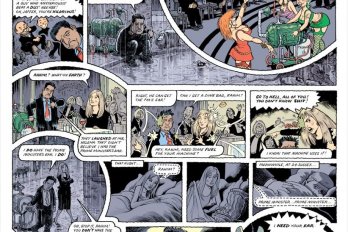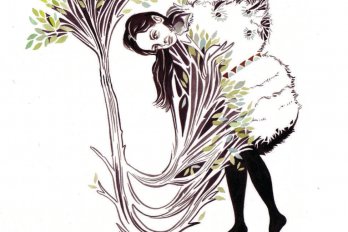In 1670, sometime after English settler Daniel Denton encountered aboriginals on Long Island, he wrote, “They are great lovers of strong drink, yet do not care for drinking, unless they have enough to make themselves drunk.” With this and other colonial tracts, an enduring and pejorative myth was forged: “Indians” can’t handle their booze. And the “firewater myth,” as it would later be called, would in turn be used to bolster a long history of government interference in native populations’ access to alcohol. Just twenty-five years ago, the Indian Act was finally overhauled, giving First Nations complete authority to deal with their own affairs, including those related to alcohol.
Meanwhile, as soon as native communities were allowed any alcoholic self-determination, starting in the ’50s, many chose local prohibition. Today over 100 of some 600 band councils enforce self-imposed bans. The obvious reason is that drinking within aboriginal communities continues to be a problem. Statistics are hard to come by, but we do know that there are many more incidences of fetal alcohol syndrome on reserves than in the general population, and the majority of fatal fire and vehicular accidents on reserves turn out to be alcohol related. In Natuashish, Labrador, where residents voted to extend a two-year-old ban this past March, there’s no such thing as social drinking, according to former chief Katie Rich. “People drink to get drunk, and it’s always been that way,” she says. “The alcohol will come in, and you drink it till it’s all gone and you’re drunk.”
Sound familiar? If anything, the firewater myth has picked up steam since early genetic studies posited that aboriginals are predisposed to enzyme variants that slow the metabolism of alcohol—and increase the rate of intoxication. Never mind that extensive research conducted over the past fifteen years hasn’t found these variants in native populations (only in East Asian and African ones, and even then they seem to offer these populations some protection against alcoholism, since the hangovers are so bad). These findings are often overlooked, perhaps because the firewater myth provides a handy label for what is actually a much more difficult problem to solve.
Bitter Tears
In colonial times, some of Canada’s First Nations fought to keep dry
From the earliest days of colonization, certain First Nations leaders have argued for stricter alcohol control in their communities. In Deadly Medicine, historian Peter C. Mancall refers to an Algonquin man in seventeenth-century New France who had petitioned the French governor to ban the trade of rum for fur. The governor was “killing us by permitting people to give us liquors,” he told inquiring clerics. “I have already told him twice, and yet he does nothing. You beg him to forbid it. Perhaps he will obey you.”
—Allison Martell
“Most populations dissembled by colonialism experience drug and alcohol problems,” says Dr. Richard Thatcher, a sociologist who has been studying problem drinking in First Nations communities for over twenty years. “And it takes many generations to resolve them.” In other words, binge drinking isn’t unique to aboriginals (as the term “firewater myth” implies); it’s a behaviour adopted by individuals to cope with the hopelessness of life on some reserves. Thatcher understands the push for dry communities, but suggests it won’t accomplish anything unless it is accompanied by initiatives that offer people incentives to plan for the long term.
Some in the community go further, arguing that, in the absence of such strategies, bans just drive problem drinking underground. Simeon Tshakapesh, Natuashish’s new chief, says he reopened the debate about the alcohol ban in response to reports of rampant smuggling. Booze was still coming in, and commanding $350 per bottle. “A few people were afraid to come home if they’d been drinking out of town, and had to sleep outside on the Ski-doos,” he adds. It only underscores the problem that Tshakapesh has been charged with intoxication. (He has pleaded not guilty.)
“We never expected to wipe out alcohol altogether,” Katie Rich says when asked about the ban’s limitations. “We just wanted to get rid of the large quantities.” She explains that the community was in a state of constant crisis prior to the ban; alcohol was the driving force behind a never-ending cycle of suicide, domestic violence, and petty theft. Now that crime has decreased, it’s possible for the community to redirect its resources toward initiatives like the Journey, a recovery program that doesn’t treat problem drinking as a genetic destiny.
Above all, Rich says, the ban reflects the community’s commitment to change. It’s a sign of the hopefulness that could ultimately serve as its own solution.
This appeared in the July/August 2010 issue.





